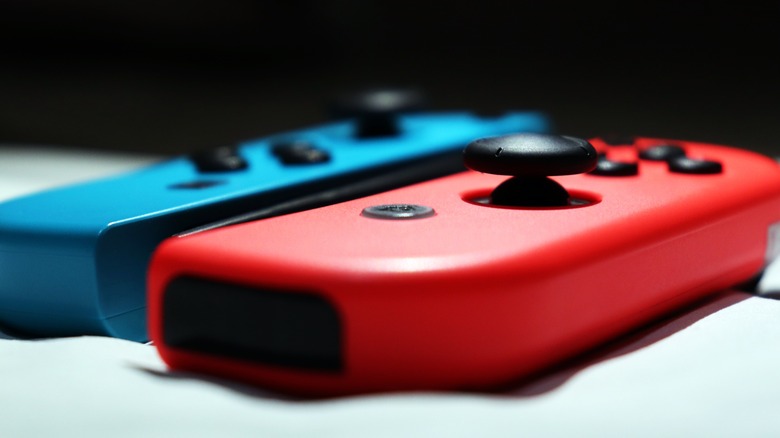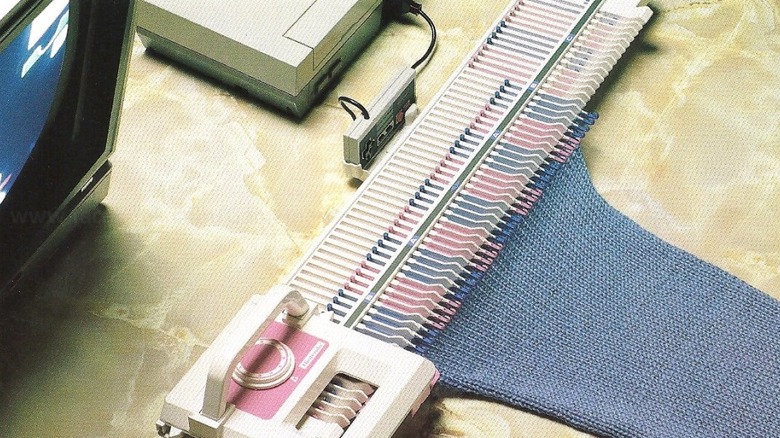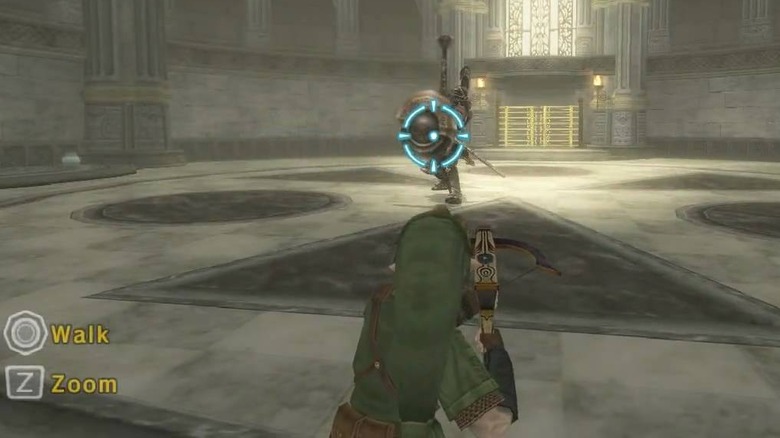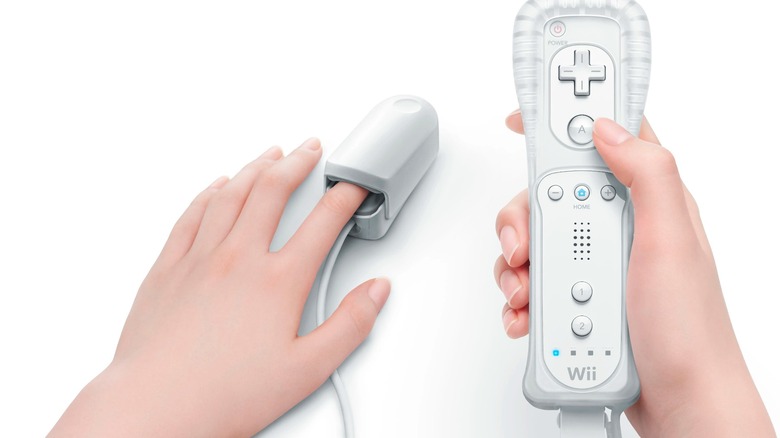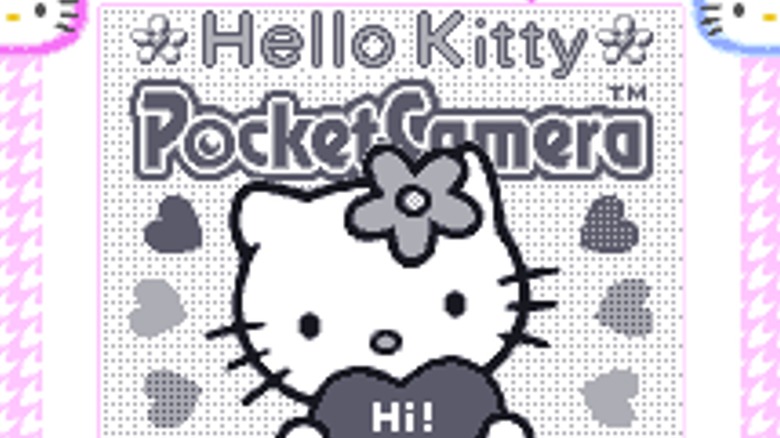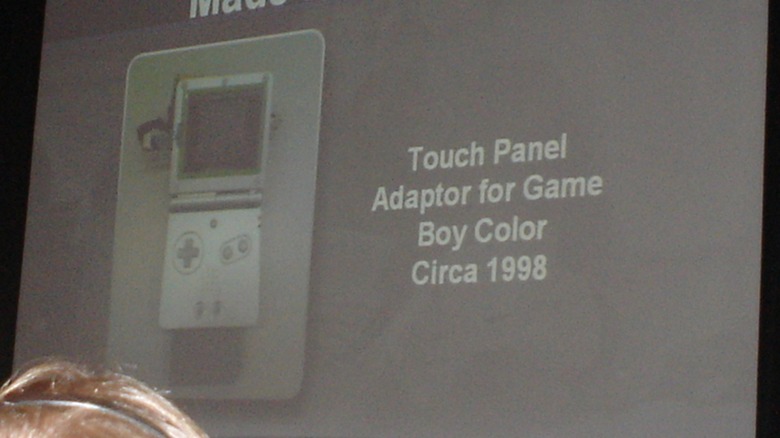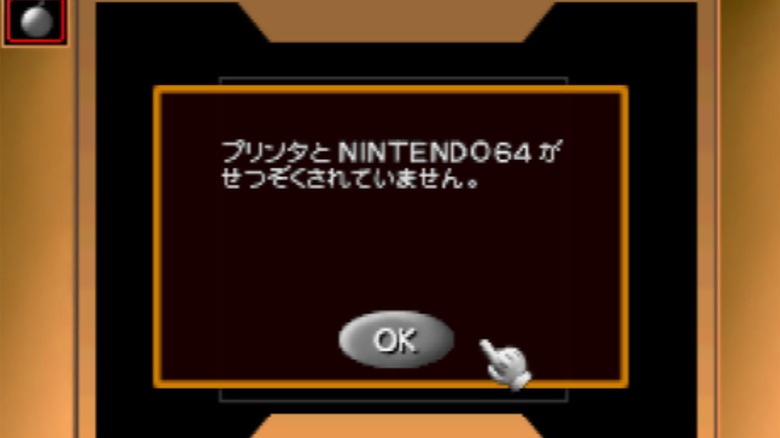Strange Nintendo Accessories That Never Saw The Light Of Day
Nintendo is constantly experimenting with new peripherals that add new elements or alter the functionality of the company's various consoles. Throughout the company's history, Nintendo has released some interesting devices that show outside-the-box thinking, including the Game Boy Camera, Game Boy Printer, and the Nintendo 64DD. If these extremely niche products ended up reaching the general public, then it's wild to imagine just what didn't make the cut.
It's a fun exercise to consider just what exactly makes a product "weird," as well. Some products, like Nintendo Labo, feel like they're for more of a niche demographic, regardless of how fun-looking they may be. Some peripherals have also been pushed into markets where gaming isn't often considered, which makes for a weird fit. Combining work with play, though may seem like a good idea at first, can end up making both things a worse experience. Some of the following products were eventually released as something greater, even if the bizarre prototypes sported primitive technology and janky designs. Here are some strange unreleased Nintendo accessories that never saw the light of day.
Page Boy
Most of the time, gaming and work remain as two separate entities. However, back in the day, Nintendo set out to bridge this gap on a few occasions. The company made a niche project that would convert the Game Boy into the ultimate fusion of business and play, in theory making the Game Boy a more universally appealing device. Thus, the idea for the Page Boy was born. The Page Boy would connect to the Game Boy, allowing the portable console to function as a digital assistant. The device itself included a small keyboard and would allow the user to send emails, search the internet, and more. The project was canceled when the price of the Game Boy was decreased, thus making the Page Boy cost around the same as the console itself, which would theoretically defeat the purpose entirely.
One confirmed prototype of this device was discovered by video game historian Liam Robertson, who has released images and information regarding the peripheral and how it would function. For instance, Robertson has revealed that the system would have used radio waves, since it was meant to launch before the age of widespread Wi-Fi. In the end, the product ultimately failed because of lack of "cost effective duplex wireless data networks covering Japan or Europe at the time," which limited the areas in which the Page Boy could have been released. As Robertson stated, "Nintendo wanted it to be universally available and functional around the world. This they believed was key to its success."
Nintendo Knitting Machine
Out of all the things that players might expect from a Nintendo peripheral, a knitting machine isn't the first thing that would naturally come to mind. Though for Nintendo, a company famous for making odd choices to diversify its content, this isn't entirely surprising. The Nintendo Knitting Machine is arguably the oddest of a long line of peripherals, which would have created a strange fusion between knitting and gaming if it had been released. This strange device is an old peripheral that would work alongside the NES to help the user knit. According to a brochure shared by former Nintendo spokesman Howard Phillips, this device was "not a game; not a toy; not something a young girl can outgrow in three or six months or even a year." However, as many might have guessed, it seems that this product didn't have the universal appeal that Nintendo had hoped for.
It was supposedly targeted primarily at a female audience, attempting to get a "new" demographic interested in the system. The Nintendo Knitting Machine was meant as "a machine that interacts with the powerful Nintendo Entertainment System to actually knit sweaters: and not just one or two patterns but a multitude of different and unique designs." However, this extremely niche device has never seen the light of day. It appears Phillips wasn't the only person who wasn't all that excited about promoting the potential product. No matter how you slice it, this was always going to be a difficult sell for Nintendo, and it seems the company realized it. All that's left is a few photos of a potential prototype for the device.
Wii Zapper
The Wii seems to go hand-and-hand with odd peripherals. From the Wii Steering Wheel to third-party Wii tennis rackets, it seemed every company tried to make a Wii peripheral. One of the stranger unreleased Wii peripherals would have to be the original Wii Zapper design. Although a Wii Zapper was eventually released (to be used with games like "Link's Crossbow Training" and "GoldenEye 007"), early prototypes looked vastly different from the product we know today. This original Zapper would load the Wii Remote from the front, and feature its own stick for aiming. Overall, while both Wii Zapper designs had their benefits, many players had complaints about the official Wii Zapper on release, with some noting that it added few benefits over using the controller normally.
Prototype for the Wii Zapper. Not nearly as fun or arcade looking as the final product. pic.twitter.com/ixU5s9IZOh
— Nestalgia (@nestalgiacast) October 29, 2021
The oddest part about this peripheral is the fact that it appears to be made of higher-quality materials, with a much more interesting design than the one that was actually released. Between a cool shotgun-esque design and the sturdy-looking handle, this Zapper might have been a bit more functional than the actual Zapper. Some fans have decried the final Zapper design for essentially being a connector for the nunchuck and Wiimote, while others are glad that this prototype design never caught on. Sadly, the Zapper we did receive was essentially only a plastic casing with fewer add-ons than the original design.
Wii Vitality Sensor
Boasting games like "Wii Sports" and "Wii Fit," as well as accessories like the Wii Balance Board, the Nintendo Wii shifted gaming in a more health-centric direction for a period of time. One health accessory that would have perfectly followed this trend was the Wii Vitality Sensor. This device was essentially a heart monitor that could attach to the Wii Remote. The idea was that this device would help players learn about their own heart rate, making them more comfortable with their body and health as they exercised with the console.
Despite the fitness focus of the Wii, Nintendo seemingly decided there really wasn't a place for the Wii Vitality Sensor on the market. Aside from reading heart rates, this peripheral seems like it would have been useless for most games. The Nintendo Switch would eventually incorporate heart rate sensors through the Joy-Cons for use in games like "Ring Fit Adventure," but these functions have very few uses on the Switch otherwise. There was even less call for a separate pulse-monitoring accessory in the Wii era. I
n the end, the Wii Vitality Sensor was canceled due to quality, rather than its niche nature. Nintendo President Satoru Iwata explained to investors: "After a large-scale test of a prototype inside the company, we found out that for some people the sensor did not work as expected ... it is a little bit of a stretch to make it applicable to every single person."
Hello Kitty Pocket Camera
Though the Game Boy had many different peripherals, not all of them were a good idea on the surface. One of the weirder gambles was the astonishingly popular Game Boy Camera, which allowed gamers to take photos and even print them with the Game Boy Printer. While this is weird enough, a strange variation of the Game Boy Camera, the Hello Kitty Pocket Camera, came pretty close to release as a new part of the line-up. As the name implies, this device would have prominently featured Hello Kitty alongside other Sanrio characters. The product was never released, but was eventually rediscovered in 2020.
The Hello Kitty Pocket Camera was set to be very different from any other Game Boy Camera released before it, featuring unique minigames and layouts. While Hello Kitty is a popular character, it seems like an especially odd choice to choose this IP to tie into a Game Boy peripheral. With so many popular gaming franchises like "Pokémon" or "Kirby" to choose from, choosing a character that has comparatively very little to do with gaming culture feels like a strange decision. It hasn't been officially reported as to why the peripheral was canceled, but this disconnect could serve as an explanation, not to mention the decline of the Game Boy's popularity in the late '90s.
Touch Panel Adapter
A few of Nintendo's failed peripherals eventually turned into something much more impressive later down the line. This is true for Nintendo's unreleased Touch Panel Adaptor, which was designed to give the Game Boy Color touchscreen capabilities. However, the dark screen of the Game Boy Color made this product difficult to use, which may have led to its cancellation. This product would later be demoed for the Game Boy Advance SP before finally being implemented in the design of the Nintendo DS.
While this isn't the weirdest peripheral in the world, it's interesting to note how something that was once regarded as a potential failure could then go on to inspire Nintendo's highest-selling console of all time. It seems the only major thing that this peripheral needed was the assistance of a backlit screen to make using the touchscreen much easier. The SP version received a better internal reception, but the concept needed a few more years to truly shine as part of the DS. This just goes to show that not all failed products are bad ideas; some just need a little more time. In an interesting side-note, Masato Kuwahara (the original designer of this prototype) isn't totally sure that his product inspired the DS in the end. However, in a talk at GDC 2009, Kuwahara stated that he thinks this may have been the case.
Game Boy Printer COLOR
Sometimes, even when a product is a good fit for one console generation, a follow-up turns out to be a poor business decision. This seems to have been the case for the unreleased successor to the Game Boy Printer, the Game Boy Printer COLOR. This device was specifically going to work alongside a Mario game, "Mario Artist: Paint Studio," which was only released in Japan for the Nintendo 64. Due to the poor sales of both "Mario Artist: Paint Studio" and the N64 64DD peripheral, this device was doomed from the start.
As mentioned previously, the Game Boy Printer was already a weird-enough investment, requiring special paper to print low-quality pictures. This version was apparently meant to do the same thing, only (you guessed it!) in color. It was definitely an interesting product, but fans seem to have found the original printer to be more of a one-and-done gimmick, and not meant for a long-standing series.
One dataminer on Reddit, u/LuigiBlood, has done a great job preserving the history and code of the Game Boy Printer COLOR, however, attempting to save it from being forgotten. One commenter on a post detailing their findings writes, "I'd never heard of the GB Printer Color until now. Maybe one of these days someone could recreate the hardware, knowing how it was supposed [to] work." With interest this high, maybe fans will eventually see an unofficial reproduction in the future, reviving a piece of Nintendo history.
Reverse enginnering the unreleased GameBoy Printer COLOR
by
u/LuigiBlood in
emulation
PediSedate
While many of these failed peripherals are notable for their niche goals or bizarre designs, this potential product by Nintendo falls into so many different categories of weirdness. The PediSedate was marketed in a truly unexpected way: "a medical device to the doctor, and a toy to the child, the pediatric sedation headset blurs the border between procedure and play." This device was a pair of headphones and cup that would attach to the Game Boy Advance. While children were distracted playing games on the system, the peripheral would administer the anesthesia, allowing kids to peacefully prepare for a procedure. Though Nintendo was obviously trying to be helpful in the realm of medicine, PediSedate may have been a step too far outside the company's realm of expertise.
The PediSedate is already a bizarre device, but looking at the potential designs for the device brings everything to a whole different level. The large semi-clear plastic of the headset looks like some sort of futuristic breathing device. A large arm fits snugly over the mouth and nose, and would have been used to administer anesthesia. With all that being said, a study about the PediSedate found the device to be very effective. In the abstract, the authors reported, "At least 96% of the children who completed the study exhibited an excellent degree of sedation." Though this device is bizarre, it could have actually been quite useful — if it ever released.
Nintendo 3D
Since the early days of Nintendo, the company has been obsessed with the implementation of 3D technology. Ranging from the Virtual Boy all the way to the 3DS, there were many different experiments with this technology before the eventual success of the 3DS. This trend even continued into the GameCube era, when Nintendo showed off a peculiar device that would dramatically change the functionality of the console. During E3 2002, Nintendo showed guests the Nintendo 3D, a planned add-on for the GameCube that added a portable screen to the system, removing the need for a TV. Later on, it was revealed that the device would have also allowed for 3D effects without the need for special glasses. With all these admittedly interesting features, there may have been a spot in the gaming market for a device like this.
The strangest thing about this peripheral is the simple fact that Nintendo didn't release it. Looking back, it's easy to see a direct line between the idea of a portable home console and the Nintendo Switch, not to mention the glasses-free 3D that would be realized in the 3DS. While both of these later systems were successful, it seems that the early 2000s wasn't the time for this device. In the end, the device never saw the light of day because of the expensive cost of mass-producing a 3D-capable LCD screen.
Work Boy
Very similar to the Page Boy, the Work Boy set out to accomplish the task of combining work and play. This failed Nintendo peripheral plugged into the side of the Game Boy, and would function virtually the same as a keyboard. With this, the user would be able to perform their usual business functions, including sending emails, maintaining an address book, and much more. With only two confirmed prototypes, the project didn't make it too far before it was cancelled. However, one of the prototypes has been found, along with a reproduction of the original game cartridge, which allowed game historian Liam Robertson to test out the device. The product was originally set to release at a price of $79-$89, but Nintendo nixed its release during development.
It's been argued that the Work Boy may have simply been ahead of its time, but it's always a bit weird to see a Game Boy — a device generally used for fun — used for work. Plus, with such a teensy-tiny screen and keyboard buttons, using this device seems like a non-ideal scenario. Still, for fans who are curious to see how the system would have functioned, Robertson has produced an in-depth video showing just that.

